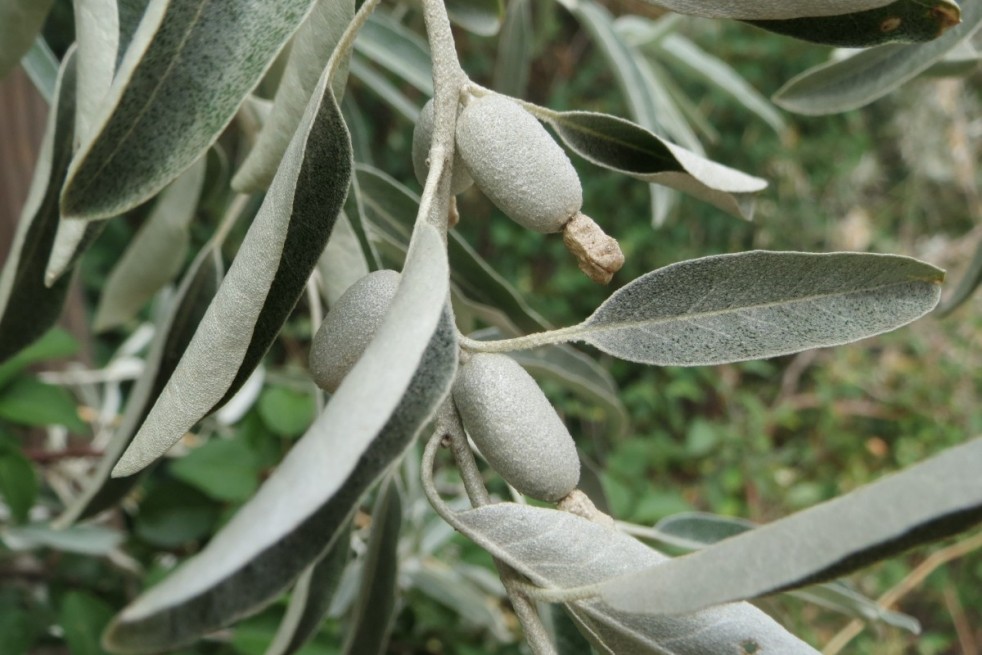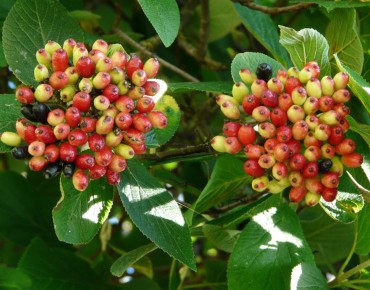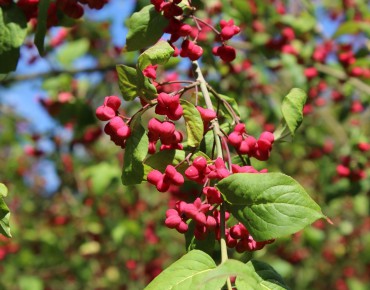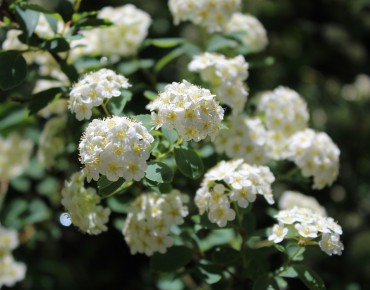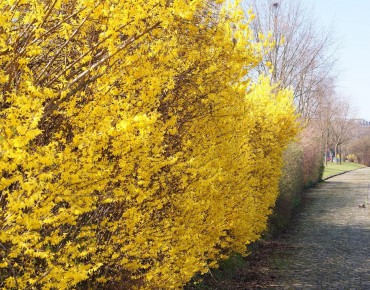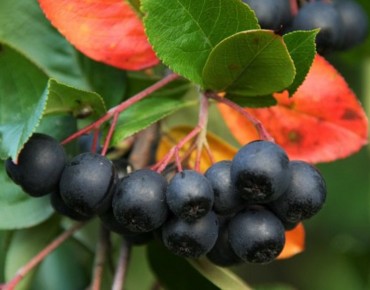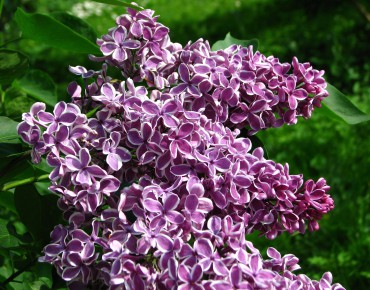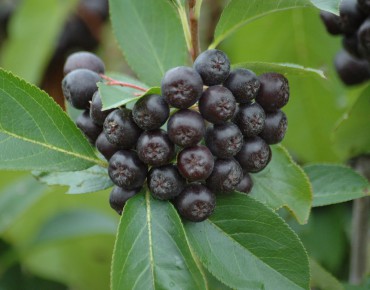- Out-of-Stock
Russian-olive
Elaeagnus angustifolia
Description
The Elaeagnus angustifolia is not an olive tree, despite the fact that it is called the Russian-olive, it has a beautiful moving foliage with soft colours reminiscent of the olive tree. Its presence brings a lot of lightness and softness to the garden. Its fragrant, melliferous flowering and fruiting complete the evocation of a charming Mediterranean atmosphere.
Elaeagnus angustifolia, with its deciduous foliage, is on average 2.5 to 4 m high (7 m mature) and spreads over a distance of about 3 m. The leaves are narrow and elongated, between 5 and 9 cm long. The greenish-grey top is smooth, while the silvery underside has a slightly scaly appearance.
From May onwards, the creamy-yellow flowers with 4 triangular lobes emerge from a light grey bud at the base of the leaf. Small (1cm) but strongly scented with a honey-like or jasmine-like fragrance, they attract all the foragers. At the end of the summer, edible berries appear in the shape of a small olive, first green then yellow-orange when ripe, they can be harvested from August to October. The berries are very sweet and can be made into an original jam or left for the birds to eat.
Elaeagnus angustifolia originates from the Near East. It was introduced into Germany in the 18th century and then spread throughout Europe (except in mountainous regions). It also thrives in abundance in North America.
Elaeagnus angustifolia does not belong to the olive family and is much more accommodating in its growing conditions. Withstanding extreme cold down to -25°C, wind, sea spray and drought, the Russian-olive thrives in all types of soil as long as they are very well drained. It prefers a sunny exposure but accepts light shade. The Russian-olive can be pruned very well, preferably in March for a light pruning or in the autumn for a more important pruning.
The Elaeagnus angustifolia will quickly become the centrepiece of your garden. You will soon have a lovely shady spot because it grows quickly and has a naturally bushy, rounded habit. It can also be pruned and shaped to your liking. As a versatile shrub, he can also form dense hedges with a natural appearance.
Features
- Common name : Russian-olive
- Family : Elaeagnaceae
- Category : shrub
- Spread : 3 m
- Foliage : deciduous
- Color of flowers : yellow-cream
- Fruit : edible berries in the shape of a small olive, first green then yellow-orange when ripe, very sweet.
- Harvest : August to October
- Use : isolated - shrubbery - hedge
- Soil : all
- Habit : Spreading
- Earth to use : universal potting soil/garden soil/compost
- Enemies : cochineal - caterpillar
- Possible diseases : coral disease
- Date of last repotting : 02/01/24
Expédition & livraison
How does the delivery work?
 As soon as you place your order your plants are selected
As soon as you place your order your plants are selected Each order is processed individually.
Each order is processed individually. Plants are packed, staked and labeled.
Plants are packed, staked and labeled. Packaging is carefully implemented to avoid any problems.
Packaging is carefully implemented to avoid any problems. Packages are ready to be shipped.
Packages are ready to be shipped.
Our delivery methods
Shipping of our plants throughout Europe (except overseas and islands).
Customer reviews

